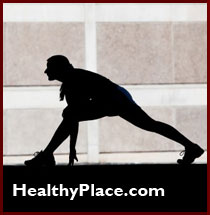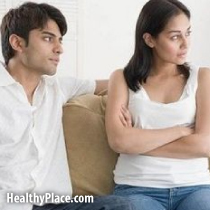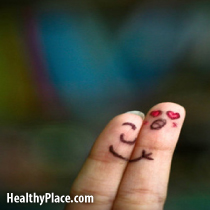
Detailed information on vitamin B6, uses of vitamin B6, signs and symptoms of vitamin B6 deficiency, and vitamin B6 supplements.
Dietary Supplement Fact Sheet: Vitamin B6
Table of Contents
Vitamin B6: What is it?
Vitamin B6 is a water-soluble vitamin that exists in three major chemical forms: pyridoxine, pyridoxal, and pyridoxamine [1,2]. It performs a wide variety of functions in your body and is essential for your good health. For example, vitamin B6 is needed for more than 100 enzymes involved in protein metabolism. It is also essential for red blood cell metabolism. The nervous and immune systems need vitamin B6 to function efficiently, [3-6] and it is also needed for the conversion of tryptophan (an amino acid) to niacin (a vitamin) [1,7].
Hemoglobin within red blood cells carries oxygen to tissues. Your body needs vitamin B6 to make hemoglobin. Vitamin B6 also helps increase the amount of oxygen carried by hemoglobin. A vitamin B6 deficiency can result in a form of anemia [1] that is similar to iron deficiency anemia.
An immune response is a broad term that describes a variety of biochemical changes that occur in an effort to fight off infections. Calories, protein, vitamins, and minerals are important to your immune defenses because they promote the growth of white blood cells that directly fight infections. Vitamin B6, through its involvement in protein metabolism and cellular growth, is important to the immune system. It helps maintain the health of lymphoid organs (thymus, spleen, and lymph nodes) that make your white blood cells. Animal studies show that a vitamin B6 deficiency can decrease your antibody production and suppress your immune response [1,5].
Vitamin B6 also helps maintain your blood glucose (sugar) within a normal range. When caloric intake is low your body needs vitamin B6 to help convert stored carbohydrate or other nutrients to glucose to maintain normal blood sugar levels. While a shortage of vitamin B6 will limit these functions, supplements of this vitamin do not enhance them in well-nourished individuals [1,8-10].
What foods provide vitamin B6?
Vitamin B6 is found in a wide variety of foods including fortified cereals, beans, meat, poultry, fish, and some fruits and vegetables [1,11]. The table of selected food sources of vitamin B6 suggests many dietary sources of B6.
What is the Recommended Dietary Allowance for vitamin B6 for adults?
The Recommended Dietary Allowance (RDA) is the average daily dietary intake level that is sufficient to meet the nutrient requirements of nearly all (97 to 98 percent) healthy individuals in each life-stage and gender group [12].
The 1998 RDAs for vitamin B6 [12] for adults, in milligrams, are:
References
| Life-Stage | Men | Women | Pregnancy | Lactation |
|---|
| Ages 19-50 | 1.3 mg | 1.3 mg | | |
| Ages 51+ | 1.7 mg | 1.5 mg | | |
| All Ages | | | 1.9 mg | 2.0 mg |
| Results of two national surveys, the National Health and Nutrition Examination Survey (NHANES III 1988-94) [12,13] and the Continuing Survey of Food Intakes by Individuals (1994-96 CSFII) [12], indicated that diets of most Americans meet current intake recommendations for vitamin B6 [12]. |
When can a vitamin B6 deficiency occur?
Clinical signs of vitamin B6 deficiency are rarely seen in the United States. Many older Americans, however, have low blood levels of vitamin B6, which may suggest a marginal or sub-optimal vitamin B6 nutritional status. Vitamin B6 deficiency can occur in individuals with poor quality diets that are deficient in many nutrients. Symptoms occur during later stages of deficiency, when intake has been very low for an extended time. Signs of vitamin B6 deficiency include dermatitis (skin inflammation), glossitis (a sore tongue), depression, confusion, and convulsions [1,12]. Vitamin B6 deficiency also can cause anemia [1,12,14]. Some of these symptoms can also result from a variety of medical conditions other than vitamin B6 deficiency. It is important to have a physician evaluate these symptoms so that appropriate medical care can be given.
Who may need extra vitamin B6 to prevent a deficiency?
Individuals with a poor quality diet or an inadequate B6 intake for an extended period may benefit from taking a vitamin B6 supplement if they are unable to increase their dietary intake of vitamin B6 [1,15]. Alcoholics and older adults are more likely to have inadequate vitamin B6 intakes than other segments of the population because they may have limited variety in their diet. Alcohol also promotes the destruction and loss of vitamin B6 from the body.
Asthmatic children treated with the medicine theophylline may need to take a vitamin B6 supplement [16]. Theophylline decreases body stores of vitamin B6 [17], and theophylline-induced seizures have been linked to low body stores of the vitamin. A physician should be consulted about the need for a vitamin B6 supplement when theophylline is prescribed.
What are some current issues and controversies about vitamin B6?
Vitamin B6 and the nervous system
Vitamin B6 is needed for the synthesis of neurotransmitters such as serotonin and dopamine [1]. These neurotransmitters are required for normal nerve cell communication. Researchers have been investigating the relationship between vitamin B6 status and a wide variety of neurologic conditions such as seizures, chronic pain, depression, headache, and Parkinson's disease [18].
Lower levels of serotonin have been found in individuals suffering from depression and migraine headaches. So far, however, vitamin B6 supplements have not proved effective for relieving these symptoms. One study found that a sugar pill was just as likely as vitamin B6 to relieve headaches and depression associated with low dose oral contraceptives [19].
Alcohol abuse can result in neuropathy, abnormal nerve sensations in the arms and legs [20]. A poor dietary intake contributes to this neuropathy and dietary supplements that include vitamin B6 may prevent or decrease its incidence [18].
Vitamin B6 and carpal tunnel syndrome
Vitamin B6 was first recommended for carpal tunnel syndrome almost 30 years ago [21]. Several popular books still recommend taking 100 to 200 milligrams (mg) of vitamin B6 daily to treat carpal tunnel syndrome, even though scientific studies do not indicate it is effective. Anyone taking large doses of vitamin B6 supplements for carpal tunnel syndrome needs to be aware that the Institute of Medicine recently established an upper tolerable limit of 100 mg per day for adults [12]. There are documented cases in the literature of neuropathy caused by excessive vitamin B6 taken for treatment of carpal tunnel syndrome [22].
Vitamin B6 and premenstrual syndrome
Vitamin B6 has become a popular remedy for treating the discomforts associated with premenstrual syndrome (PMS). Unfortunately, clinical trials have failed to support any significant benefit [23]. One recent study indicated that a sugar pill was as likely to relieve symptoms of PMS as vitamin B6 [24]. In addition, vitamin B6 toxicity has been seen in increasing numbers of women taking vitamin B6 supplements for PMS. One review indicated that neuropathy was present in 23 of 58 women taking daily vitamin B6 supplements for PMS whose blood levels of B6 were above normal [25]. There is no convincing scientific evidence to support recommending vitamin B6 supplements for PMS.
Vitamin B6 and interactions with medications
There are many drugs that interfere with the metabolism of vitamin B6. Isoniazid, which is used to treat tuberculosis, and L-DOPA, which is used to treat a variety of neurologic problems such as Parkinson's disease, alter the activity of vitamin B6. There is disagreement about the need for routine vitamin B6 supplementation when taking isoniazid [26,27]. Acute isoniazid toxicity can result in coma and seizures that are reversed by vitamin B6, but in a group of children receiving isoniazid, no cases of neurological or neuropsychiatric problems were observed regardless of whether or not they took a vitamin B6 supplement. Some doctors recommend taking a supplement that provides 100% of the RDA for B6 when isoniazid is prescribed, which is usually enough to prevent symptoms of vitamin B6 deficiency. It is important to consult with a physician about the need for a vitamin B6 supplement when taking isoniazid.
References
What is the relationship between vitamin B6, homocysteine, and heart disease?
A deficiency of vitamin B6, folic acid, or vitamin B12 may increase your level of homocysteine, an amino acid normally found in your blood [28]. There is evidence that an elevated homocysteine level is an independent risk factor for heart disease and stroke [29-37]. The evidence suggests that high levels of homocysteine may damage coronary arteries or make it easier for blood clotting cells called platelets to clump together and form a clot. However, there is currently no evidence available to suggest that lowering homocysteine level with vitamins will reduce your risk of heart disease. Clinical intervention trials are needed to determine whether supplementation with vitamin B6, folic acid, or vitamin B12 can help protect you against developing coronary heart disease.
What is the health risk of too much vitamin B6?
Too much vitamin B6 can result in nerve damage to the arms and legs. This neuropathy is usually related to high intake of vitamin B6 from supplements, [28] and is reversible when supplementation is stopped. According to the Institute of Medicine, "Several reports show sensory neuropathy at doses lower than 500 mg per day" [12]. As previously mentioned, the Food and Nutrition Board of the Institute of Medicine has established an upper tolerable intake level (UL) for vitamin B6 of 100 mg per day for all adults [12]. "As intake increases above the UL, the risk of adverse effects increases [12]."
Selected Food Sources of vitamin B6
As the 2000 Dietary Guidelines for Americans states, "Different foods contain different nutrients and other healthful substances. No single food can supply all the nutrients in the amounts you need" [38]. As the following table indicates, vitamin B6 is found in a wide variety of foods. Foods such as fortified breakfast cereals, fish including salmon and tuna fish, meats such as pork and chicken, bananas, beans and peanut butter, and many vegetables will contribute to your vitamin B6 intake. If you want more information about building a healthful diet, refer to the Dietary Guidelines for Americans and the Food Guide Pyramid.
Table of Food Sources of Vitamin B6 [11]
| Food | Milligrams (mg) per serving | % DV* |
|---|
| Ready-to-eat cereal, 100% fortified, ¾ c | 2.00 | 100 |
| Potato, Baked, flesh and skin, 1 medium | 0.70 | 35 |
| Banana, raw, 1 medium | 0.68 | 34 |
| Garbanzo beans, canned, ½ c | 0.57 | 30 |
| Chicken breast, meat only, cooked, ½ breast | 0.52 | 25 |
| Ready-to-eat cereal, 25% fortified, ¾ c | 0.50 | 25 |
| Oatmeal, instant, fortified, 1 packet | 0.42 | 20 |
| Pork loin, lean only, cooked, 3 oz | 0.42 | 20 |
| Roast beef, eye of round, lean only, cooked, 3 oz | 0.32 | 15 |
| Trout, rainbow, cooked, 3 oz | 0.29 | 15 |
| Sunflower seeds, kernels, dry roasted, 1 oz | 0.23 | 10 |
| Spinach, frozen, cooked, ½ c | 0.14 | 8 |
| Tomato juice, canned, 6 oz | 0.20 | 10 |
| Avocado, raw, sliced, ½ cup | 0.20 | 10 |
| Salmon, Sockeye, cooked, 3 oz | 0.19 | 10 |
| Tuna, canned in water, drained solids, 3 oz | 0.18 | 10 |
| Wheat bran, crude or unprocessed, ¼ c | 0.18 | 10 |
| Peanut butter, smooth, 2 Tbs. | 0.15 | 8 |
| Walnuts, English/Persian, 1 oz | 0.15 | 8 |
| Soybeans, green, boiled, drained, ½ c | 0.05 | 2 |
| Lima beans, frozen, cooked, drained, ½ c | 0.10 | 6 |
| * DV = Daily Value. DVs are reference numbers based on the Recommended Dietary Allowance (RDA). They were developed to help consumers determine if a food contains a lot or a little of a specific nutrient. The DV for vitamin B6 is 2.0 milligrams (mg). The percent DV (%DV) listed on the nutrition facts panel of food labels tells you what percentage of the DV is provided in one serving. Percent DVs are based on a 2,000 calorie diet. Your Daily Values may be higher or lower depending on your calorie needs. Foods that provide lower percentages of the DV also contribute to a healthful diet. |
Source: Office of Dietary Supplements, National Institutes of Health
References
back to: Alternative Medicine Home ~ Alternative Medicine Treatments
References
- Leklem JE. Vitamin B6. In: Shils ME, Olson JA, Shike M, Ross AC, ed. Modern Nutrition in Health and Disease. 9th ed. Baltimore: Williams and Wilkins, 1999: 413-421.
- Bender DA. Vitamin B6 requirements and recommendations. Eur J Clin Nutr 1989 ;43:289-309. [PubMed abstract]
- Gerster H. The importance of vitamin B6 for development of the infant. Human medical and animal experiment studies. Z Ernahrungswiss 1996; 35:309-17. [PubMed abstract]
- Bender DA. Novel functions of vitamin B6. Proc Nutr Soc 1994; 53:625-30. [PubMed abstract]
- Chandra R and Sudhakaran L. Regulation of immune responses by Vitamin B6. NY Acad Sci 1990; 585:404-423. [PubMed abstract]
- Trakatellis A, Dimitriadou A, Trakatelli M. Pyridoxine deficiency: New approaches in immunosuppression and chemotherapy. Postgrad Med J 1997; 73:617-22. [PubMed abstract]
- Shibata K, Mushiage M, Kondo T, Hayakawa T, Tsuge H. Effects of vitamin B6 deficiency on the conversion ratio of tryptophan to niacin. Biosci Biotechnol Biochem 1995; 59:2060-3. [PubMed abstract]
- Leyland DM and Beynon RJ. The expression of glycogen phosphorylase in normal and dystrophic muscle. Biochem J 1991; 278:113-7. [PubMed abstract]
- Oka T, Komori N, Kuwahata M, Suzuki I, Okada M, Natori Y. Effect of vitamin B6 deficiency on the expression of glycogen phosphorylase mRNA in rat liver and skeletal muscle. Experientia 1994; 50:127-9. [PubMed abstract]
- Okada M, Ishikawa K, Watanabe K. Effect of vitamin B6 deficiency on glycogen metabolism in the skeletal muscle, heart, and liver of rats. J Nutr Sci Vitaminol (Tokyo) 1991; 37:349-57. [PubMed abstract]
- U.S. Department of Agriculture, Agricultural Research Service,1999. USDA Nutrient Database for Standard Reference, Release 13. Nutrient Data Lab Home Page, http://www.nal.usda.gov/fnic/foodcomp
- Institute of Medicine. Food and Nutrition Board. Dietary Reference Intakes: Thiamin, riboflavin, niacin, vitamin B6, folate, vitamin B12, pantothenic acid, biotin, and choline. National Academy Press. Washington, DC, 1998.
- Alaimo K, McDowell M, Briefel R, Bischof A, Caughman C, Loria C, and Johnson C. Dietary intake of vitamins, minerals, and fiber of persons ages 2 months and over in the United States: Third National Health and Nutrition Examination survey, Phase 1, 1988-91. Hyattsville, MD: U.S. Department of Health and Human Services; Center for Disease Control and Prevention; National Center for Health Statistics, 1994:1-28.
- Combs G. The Vitamins: Fundamental aspects in nutrition and health. San Diego, California: Academic Press, Inc., 1992; 311-328.
- Lumeng L, Li TK. Vitamin B6 metabolism in chronic alcohol abuse. Pyridoxal phosphate levels in plasma and the effects of acetaldehyde on pyridoxal phosphate synthesis and degradation in human erythrocytes. J Clin Invest 1974; 53:693-704. [PubMed abstract]
- Weir MR, Keniston RC, Enriquez JI, McNamee GA. Depression of vitamin B6 levels due to theophylline. Ann Allergy 1990; 65:59-62. [PubMed abstract]
- Shimizu T, Maeda S, Mochizuki H, Tokuyama K, Morikawa A. Theophylline attenuates circulating vitamin B6 levels in children with asthma. Pharmacology 1994; 49:392-7. [PubMed abstract]
- Bernstein AL. Vitamin B6 in clinical neurology. Ann N Y Acad Sci 1990;585:250-60. [PubMed abstract]
- Villegas-Salas E, Ponce de Leon R, Juarez-Perez MA, Grubb GS. Effect of vitamin B6 on the side effects of a low-dose combined oral contraceptive. Contraception 1997; 55:245-8. [PubMed abstract]
- Vinik AI. Diabetic neuropathy: pathogenesis and therapy. Am J Med 1999; 107:17S-26S. [PubMed abstract]
- Copeland DA and Stoukides CA. Pyridoxine in carpal tunnel syndrome. Ann Pharmacother 1994; 28:1042-4. [PubMed abstract]
- Foca FJ. Motor and sensory neuropathy secondary to excessive pyridoxine ingestion. Arch Phys Med Rehabil 1985; 66:634-6. [PubMed abstract]
- Johnson SR. Premenstrual syndrome therapy. Clin Obstet Gynecol 1998; 41:405-21. [PubMed abstract]
- Diegoli MS, da Fonseca AM, Diegoli CA, Pinotti JA. A double-blind trial of four medications to treat severe premenstrual syndrome. Int J Gynaecol Obstet 1998; 62:63-7. [PubMed abstract]
- Dalton K. Pyridoxine overdose in premenstrual syndrome. Lancet 1985; 1, May 18:1168. [PubMed abstract]
- Brown A, Mallet M, Fiser D, Arnold WC. Acute isoniazid intoxication: Reversal of CNS symptoms with large doses of pyridoxine. Pediatr Pharmacol 1984; 4:199-202. [PubMed abstract]
- Brent J, Vo N, Kulig K, Rumack BH. Reversal of prolonged isoniazid-induced coma by pyridoxine. Arch Intern Med 1990; 150:1751-1753 [PubMed abstract]
- Selhub J, Jacques PF, Bostom AG, D'Agostino RB, Wilson PW, Belanger AJ, O'Leary DH, Wolf PA, Scaefer EJ, Rosenberg IH. Association between plasma homocysteine concentrations and extracranial carotid-artery stenosis. N Engl J Med 1995; 332:286-291. [PubMed abstract]
- Rimm EB, Willett WC, Hu FB, Sampson L, Colditz GA, Manson JE, Hennekens C, Stampfer MJ. Folate and vitamin B6 from diet and supplements in relation to risk of coronary heart disease among women. J Am Med Assoc 1998; 279:359-64. [PubMed abstract]
- Refsum H, Ueland PM, Nygard O, Vollset SE. Homocysteine and cardiovascular disease. Annu Rev Med 1998; 49:31-62. [PubMed abstract]
- 31 Boers GH. Hyperhomocysteinaemia: A newly recognized risk factor for vascular disease. Neth J Med 1994; 45:34-41. [PubMed abstract]
- Selhub J, Jacques PF, Wilson PF, Rush D, Rosenberg IH. Vitamin status and intake as primary determinants of homocysteinemia in an elderly population. J Am Med Assoc 1993; 270:2693-2698. [PubMed abstract]
- Malinow MR. Plasma homocyst(e)ine and arterial occlusive diseases: A mini-review. Clin Chem 1995; 41:173-6. [PubMed abstract]
- Flynn MA, Herbert V, Nolph GB, Krause G. Atherogenesis and the homocysteine-folate-cobalamin triad: Do we need standardized analyses? J Am Coll Nutr 1997; 16:258-67. [PubMed abstract]
- Fortin LJ, Genest J, Jr. Measurement of homocyst(e)ine in the prediction of arteriosclerosis. Clin Biochem 1995; 28:155-62. [PubMed abstract]
- Siri PW, Verhoef P, Kok FJ. Vitamins B6, B12, and folate: Association with plasma total homocysteine and risk of coronary atherosclerosis. J Am Coll Nutr 1998; 17:435-41. [PubMed abstract]
- Ubbink JB, van der Merwe A, Delport R, Allen RH, Stabler SP, Riezler R, Vermaak WJ. The effect of a subnormal vitamin B-6 status on homocysteine metabolism. J Clin Invest 1996; 98:177-84. [PubMed abstract]
- Dietary Guidelines Advisory Committee, Agricultural Research Service, United States Department of Agriculture (USDA). Report of the Dietary Guidelines Advisory Committee on the Dietary Guidelines for Americans, 2000. http://www.ars.usda.gov/is/pr/2000/000218.b.htm
Disclaimer
Reasonable care has been taken in preparing this document and the information provided herein is believed to be accurate. However, this information is not intended to constitute an "authoritative statement" under Food and Drug Administration rules and regulations.
General Safety Advisory
Health professionals and consumers need credible information to make thoughtful decisions about eating a healthful diet and using vitamin and mineral supplements. To help guide those decisions, registered dietitians at the NIH Clinical Center developed a series of Fact Sheets in conjunction with ODS. These Fact Sheets provide responsible information about the role of vitamins and minerals in health and disease. Each Fact Sheet in this series received extensive review by recognized experts from the academic and research communities.
The information is not intended to be a substitute for professional medical advice. It is important to seek the advice of a physician about any medical condition or symptom. It is also important to seek the advice of a physician, registered dietitian, pharmacist, or other qualified health professional about the appropriateness of taking dietary supplements and their potential interactions with medications.
back to: Alternative Medicine Home ~ Alternative Medicine Treatments
 It begins with you. Make yourself better than you ever thought you could be and you will find the relationship you have with your love partner getting better. This works especially well when two people are focusing on working on themselves; together. Then, the relationship you have with the one you love can only grow and prosper.
It begins with you. Make yourself better than you ever thought you could be and you will find the relationship you have with your love partner getting better. This works especially well when two people are focusing on working on themselves; together. Then, the relationship you have with the one you love can only grow and prosper. Hello.
Hello.  If you are a physically active woman, you are at risk for the Triad. The competitive nature and strong discipline that can help make you a good athlete may also be part of the equation leading to this disorder. Competitive athletes may be at a higher risk than the more casual athlete due to a more rigorous training schedule and the "play-to-win" nature of their sports. You are particularly at risk if you participate in endurance sports, like cross-country running; aesthetic sports, like gymnastics or ballet; and sports which require formfitting uniforms, like swimming. The emphasis on a certain "look" and the perception that carrying less weight will universally improve performance lead to this risk.
If you are a physically active woman, you are at risk for the Triad. The competitive nature and strong discipline that can help make you a good athlete may also be part of the equation leading to this disorder. Competitive athletes may be at a higher risk than the more casual athlete due to a more rigorous training schedule and the "play-to-win" nature of their sports. You are particularly at risk if you participate in endurance sports, like cross-country running; aesthetic sports, like gymnastics or ballet; and sports which require formfitting uniforms, like swimming. The emphasis on a certain "look" and the perception that carrying less weight will universally improve performance lead to this risk. Amenorrhea:
Amenorrhea: In following these exercises, you will create a book which will become a map, guide and vital resource for your triumphant journey. As you proceed on this new healing path you will gradually see your secrets unfold and become known by you in many surprising and relieving ways. You will begin to recognize how overeating and other out of control behaviors shield you from self-knowledge.
In following these exercises, you will create a book which will become a map, guide and vital resource for your triumphant journey. As you proceed on this new healing path you will gradually see your secrets unfold and become known by you in many surprising and relieving ways. You will begin to recognize how overeating and other out of control behaviors shield you from self-knowledge. Once episodes of overeating diminish and hidden feelings become apparent, the second phase of your journey begins.
Once episodes of overeating diminish and hidden feelings become apparent, the second phase of your journey begins.

 There are some feelings we have when infatuated that we don't have when we're
There are some feelings we have when infatuated that we don't have when we're 
